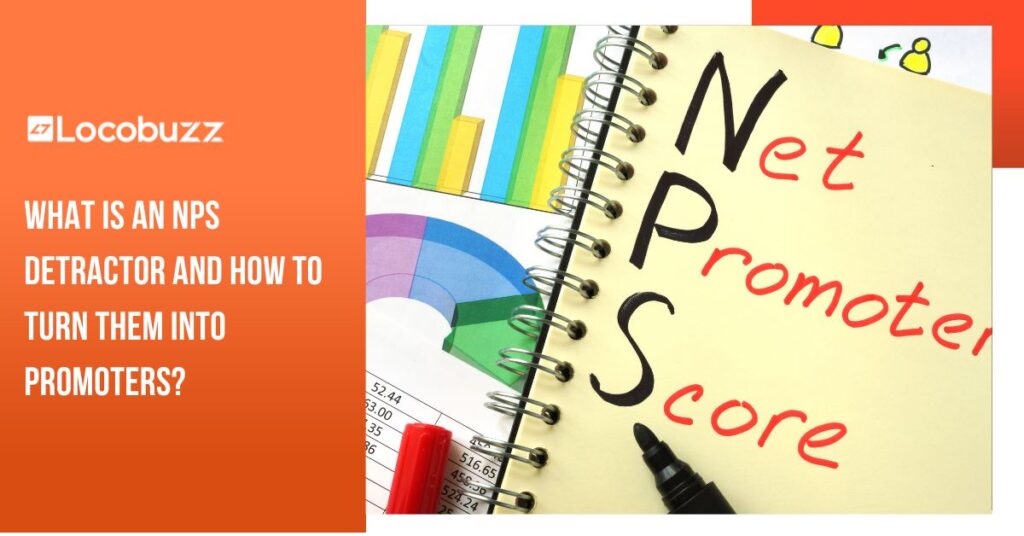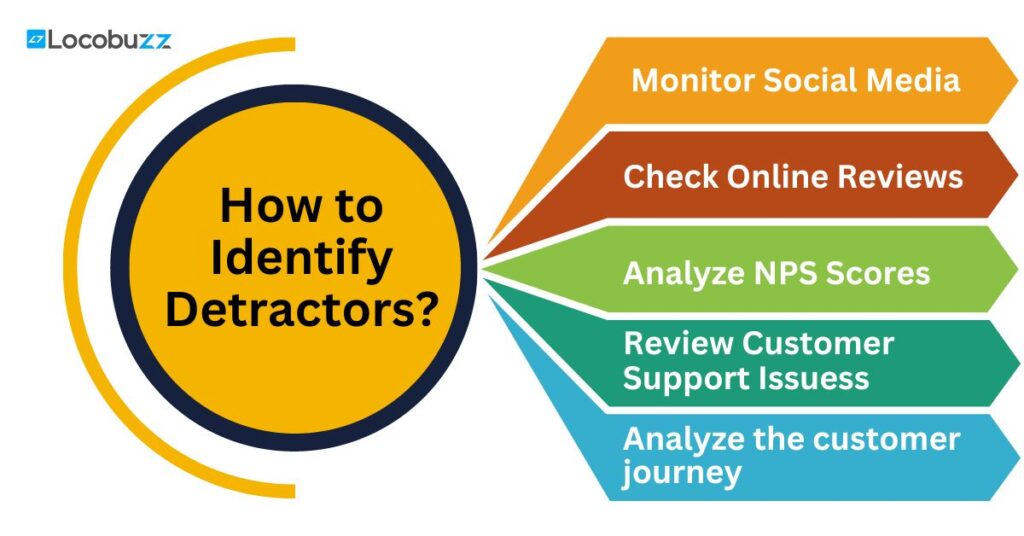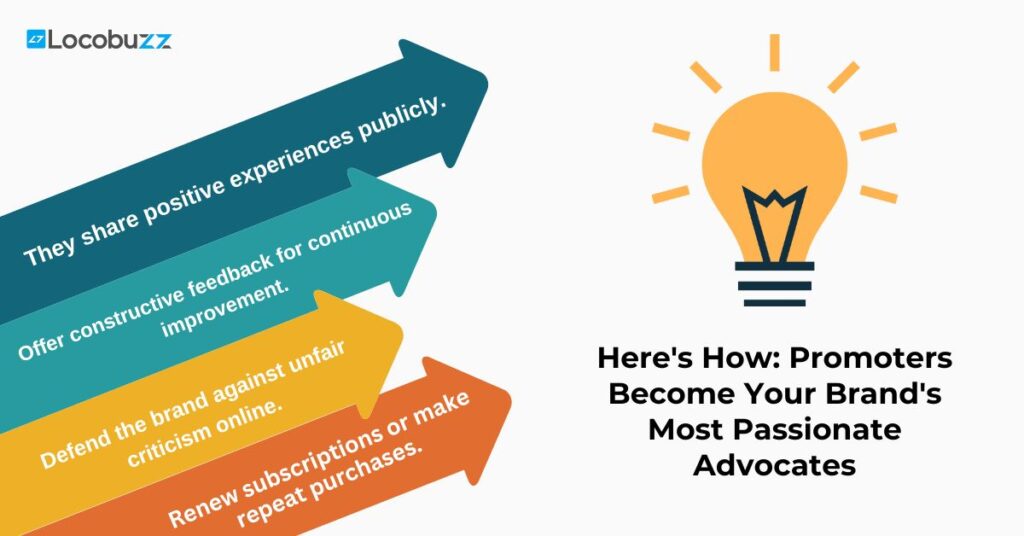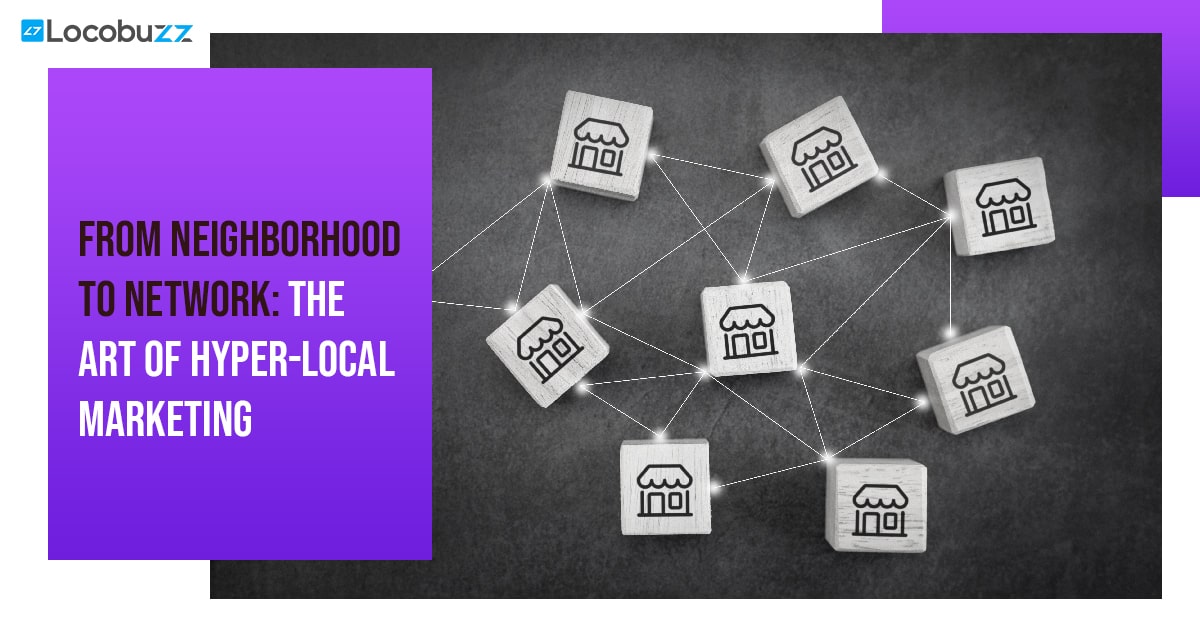What Is an NPS Detractor and How To Turn Them Into Promoters?

Table of Contents
What is NPS Detractors?
NPS detractors are customers who respond with a score of 0-6 on the Net Promoter Score survey, indicating they are not likely to recommend your product or service to others.
These individuals are typically unsatisfied with their experience and might share their negative perceptions, potentially impacting your brand’s reputation and customer loyalty.
Explanation of Promoters, Passives, and Detractors
A quick Recap…
Promoters (score 9-10): These are your brand’s cheerleaders. Promoters are highly satisfied and loyal customers who are more likely to engage in positive word-of-mouth marketing, recommending your brand to others.
Passives (score 7-8): These customers are satisfied but not enthusiastic. They are vulnerable to competitive offerings and are unlikely to actively promote your brand.
Detractors (score 0-6): Detractors are unsatisfied customers who can harm your brand and its growth through negative word-of-mouth. They are less likely to purchase from you again and may discourage others from doing so.
The Impact of Detractors on a Business
Negative Word-of-Mouth: Detractors are more likely to share their negative experiences with others, potentially dissuading new customers.
Customer Churn: An increase in detractors can lead to higher customer churn rates, directly affecting your revenue and growth.
Feedback Opportunity: On the flip side, detractors offer a valuable feedback loop. By understanding and addressing their concerns, you can improve your product or service, enhancing overall customer satisfaction. Around 70% of shoppers frequently consult available reviews, and typically within the first 20 seconds of arriving on a product page, indicating the significant impact of reviews on consumer behavior and decision-making processes.
Brand Reputation: Active management of detractors’ concerns can mitigate damage to your brand’s reputation and even turn detractors into promoters, showcasing your commitment to customer satisfaction.
In understanding NPS and its components, especially detractors, businesses can more effectively strategize on improving customer satisfaction and loyalty. The goal is not just to reduce the number of detractors but to transform their experience in a way that they become promoters of your brand.
By grasping the essence of NPS, businesses can tailor their approaches to enhance customer experiences, thereby turning potential negatives into powerful positives that drive growth and improve brand perception.
What motivates detractors to give negative feedback?
1. A Desire for Improvement
2. Seeking Validation and Acknowledgment
3. Frustration and Disappointment
4. The Impact of Negative Experiences
5. A Final Attempt at Engagement
How to Accurately Identify Detractors?

Discover how well your business is performing in customer satisfaction by using our NPS Calculator to check your Net Promoter Score.
Understanding the Reasons Behind Their Dissatisfaction
Getting to the root of detractors’ dissatisfaction involves active listening and analysis. Here’s how you can gain insights:
Common Themes: Look for recurring issues in detractor feedback. Is there a pattern related to product quality, customer service, or something else?
Direct Communication: Engage with detractors directly, if possible. Personal interaction can reveal deeper insights into their dissatisfaction and demonstrate your commitment to improvement.
Feedback Analysis Tools: Utilize software and tools designed for feedback analysis. These can help in categorizing feedback, identifying trends, and prioritizing areas for improvement.
Internal Review: Often, internal processes or policies contribute to customer dissatisfaction. Review your business practices to see if they align with customer expectations and needs.
By accurately identifying detractors and understanding the reasons behind their dissatisfaction, businesses can take targeted actions to address these concerns. This process not only helps in improving the product or service but also in building a stronger, more positive relationship with customers who felt unheard.
The transformation of detractors into promoters begins with recognition and understanding. By acknowledging their dissatisfaction and taking concrete steps to address their concerns, you lay the groundwork for turning negative experiences into positive ones, fostering loyalty, and enhancing your brand’s reputation in the long run.
8 Strategies to Turn NPS Detractors into Promoters
1. Immediate and Personalized Response to Feedback
2. Addressing the Root Cause of Dissatisfaction
3. Going Above and Beyond to Exceed Expectations
4. Fostering Ongoing Communication and Relationship Building
5. Using CRM and analytics tools
Leveraging technology like CRM (Customer Relationship Management) and analytics tools can take personalizing customer interactions to a whole new level. By using these tools, businesses can analyze customer data and behaviour to predict and address potential issues before they turn into major problems.
This proactive approach not only enhances the customer experience but also demonstrates a commitment to meeting individual needs and preferences. Personalized interactions, based on historical data and predictive analytics, can significantly improve customer satisfaction and potentially transform detractors into promoters by showing them that their preferences and concerns are being anticipated and valued.
6. Educate Your Customers
Educating your customers involves creating and sharing resources like tutorials, guides, and FAQs that help them make the most of your product or service. This strategy can significantly reduce frustration by addressing common challenges and questions upfront.
By empowering customers with knowledge, you not only enhance their experience but also foster a sense of competence and satisfaction with your offering. This proactive approach to education can transform detractors who may have felt confused or overwhelmed into informed promoters who appreciate the value and usability of your product or service.
7. Bring in Empathy in Communication
8. Empower Frontline Employees
Empowering frontline employees involves giving them the necessary training and authority to make immediate, impactful decisions to resolve detractor concerns. This strategy not only enhances customer satisfaction but also speeds up the resolution process.
Alternatively, using customer experience (CX) tools equipped with AI, like Locobuzz ResponseGenie, can offer prompt, efficient responses to customer queries, further improving satisfaction and potentially turning detractors into promoters by demonstrating responsiveness and a commitment to customer service excellence.

Utilizing Locobuzz for a Systematic Approach to Manage NPS Feedback
Locobuzz is a comprehensive customer experience platform that can play a pivotal role in tracking and analyzing NPS feedback. It offers real-time analytics, sentiment analysis, and the ability to categorize feedback into actionable insights.
By having such a tool, businesses can systematically identify detractors, understand the nuances of their feedback, and monitor changes in customer sentiment over time.
Set up automated alerts for when NPS scores fall below a certain threshold or when specific keywords are mentioned in feedback. This ensures that teams can respond swiftly to detractor feedback.
Use the analytical capabilities of locobuzz to spot trends and patterns in feedback. This can help in identifying systemic issues that need addressing or areas where the business is excelling.






















